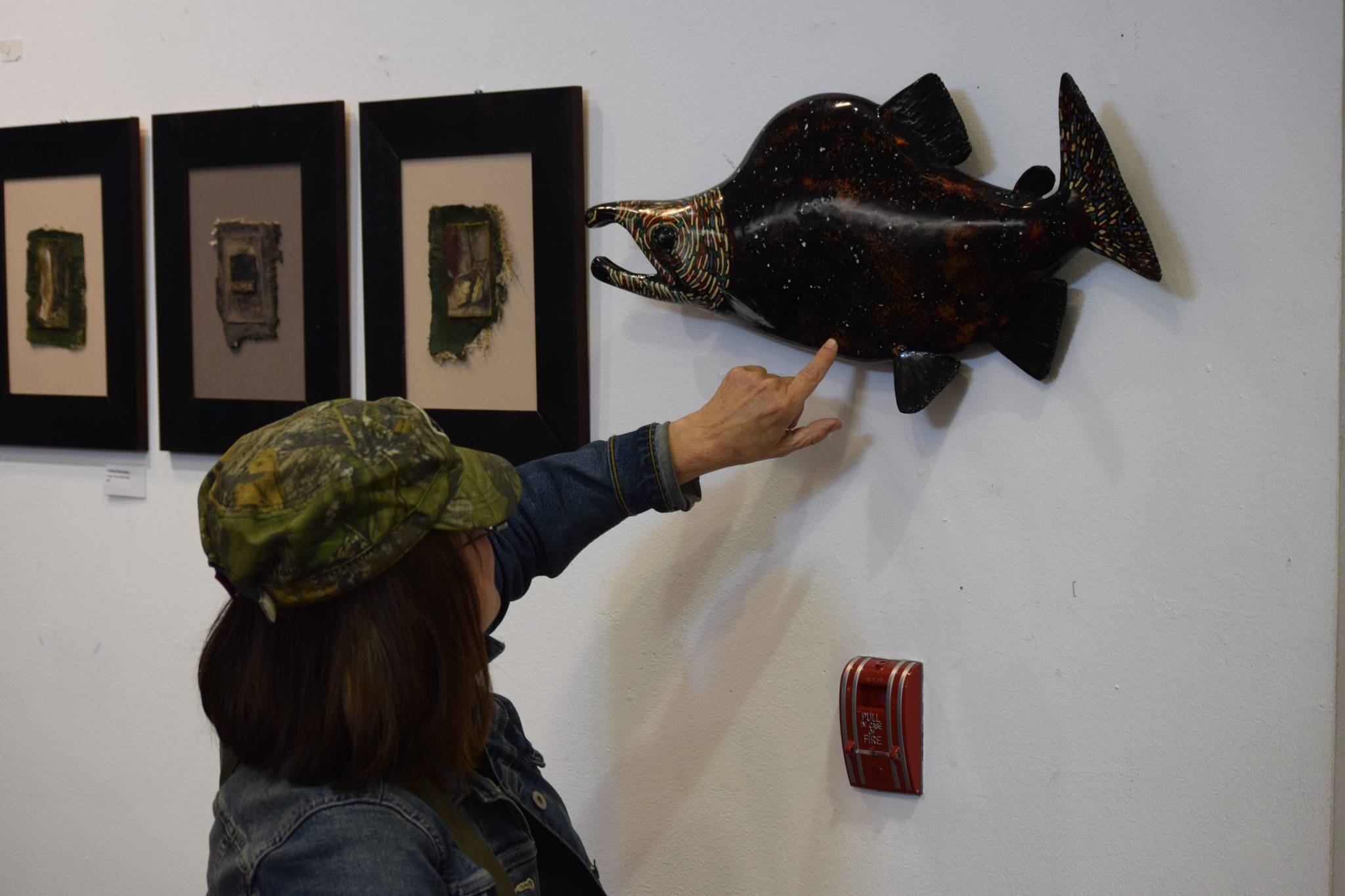Kathy Matta met Professor Tang Ming Xue when she was in Fuzhou, China, for a tai chi competition in the early 1990s. And although she eventually began to practice the martial art less, Matta did find something else in China she was passionate about.
Lacquer.
Most might know it as a varnishlike top coat for exterior wood furniture, but to Matta, it’s art.
“I wanted people to understand that … I’m not talking lacquer you put on the floor,” she said.
While in China for tai chi, Matta stayed with a host family. They knew she was going to art school in the United States studying printmaking and stained glass restoration, and offered to introduce her to Xue, one of the country’s most talented artists.
When she first saw some of his lacquer artwork, she was immediately taken by its beauty.
“And then I saw it,” Matta said. “It was like a correlation to stained glass.”
After seven years of trips back and forth to China to learn more about lacquer, she was finally able to enroll in the China Academy of Art in Hangzhou.
“I would go back every year to meet with him (Xue) to beg him to take me on,” she said. “And he saw that I was serious.”
Her artwork, which is currently on display at the Kenai Chamber of Commerce and Visitor Center, takes an Alaska twist on the traditional Chinese lacquer she learned while in Asia.
Matta’s exhibit includes both framed portraits of bears and Alaska wildlife, and also three-dimensional fish with unique designs.
The process is complicated, she said, and each piece can take over a year to complete.
To create the pieces on display at the chamber building, she bought a taxidermy fish to make the mold out of hemp fabric and clay. From there, she sketched her design on the bodies of the fish, filled them in, and polished them with layers of lacquer.
It’s sort of similar to a papier-mâché process.
“To make lacquer work, it has to be completely dry,” Matta said. “So in the winter, it’s really hard for me to work. When spring comes and it rains we have the humidity, so the oxidation dries it.”
Some of the fish on display even incorporate other organic materials, from roof shingles to banana skin and duck eggshells.
“After I do all the inlay and the painting is done … the whole thing is polished down and I keep what I want and I sand off what I don’t want,” Matta said. When she was learning under Xue while in China, they would harvest the lacquer sap from trees individually. She said the raw lacquer from urushi trees is a part of the poison sumac family, which can act the same way as poison oak or ivy.
“It’s done very traditionally, just like that,” Matta said. “There’s no machines … he taps it, puts it in the bamboo and then brings it to where they process it.”
Now, when she orders lacquer online from Japan, a smaller tube costs her close to $100.
Matta hasn’t been back to China since 2019, she said.
Three years ago her professor, Xue, suffered a brain injury, which caused him to lose some of his memory — including some about his craft.
Matta’s exhibition at the chamber is dedicated to her professor and mentor, as he struggles on his own journey of relearning his first language: the language of lacquer.
“He’s just connecting with it because of his brain injury,” she said. “He can’t remember.”
Matta said many of the techniques in all her pieces were developed by Xue, back in the days he mentored her before the accident. He remembered her during her last trip in 2019, she said, and she’s kept in touch with him a little since then.
“He is the premier lacquer artist in China,” Matta said. “If it wasn’t for him I wouldn’t be doing this.”
Matta will host a question-and-answer discussion about her art exhibition and sale at the Kenai Chamber of Commerce and Visitor Center on Friday from 1 p.m. to 3 p.m.
Reach reporter Camille Botello at camille.botello@peninsulaclarion.com.

